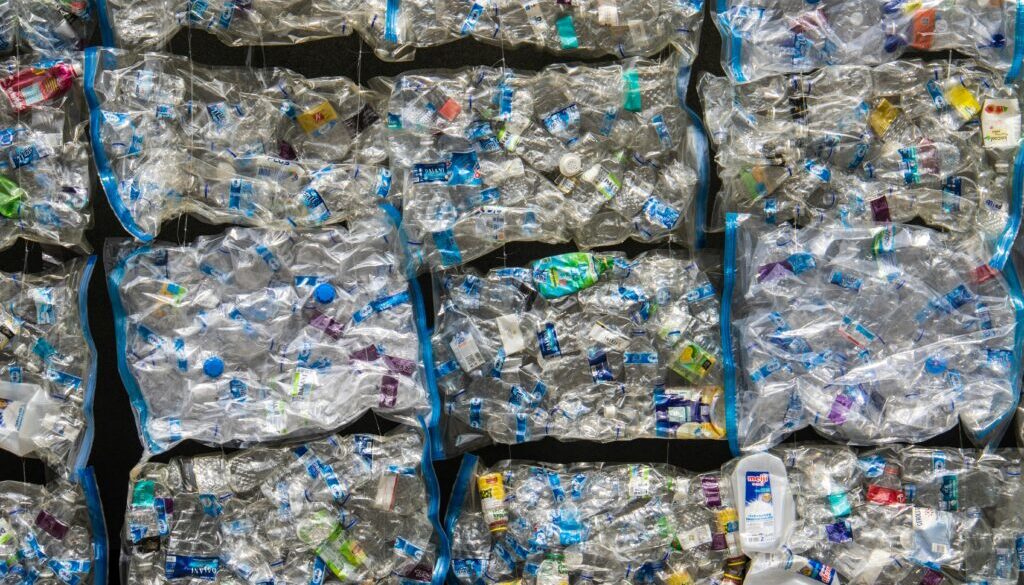“Plastics addiction” is killing us, experts say, but hope remains
Plastics are negatively impacting our health in shocking ways, with the problem growing worse over time amid lax government regulations, a group of scientists and policy experts warned on Thursday.
“We have, I think, a plastics addiction,” said Shanna Swan, a professor and epidemiologist at the Icahn School of Medicine at Mount Sinai, said in a livestreamed conference hosted by Moms Clean Air Force.
“The regulatory system is broken, in the way it fails to protect us,” Swan said.
Plastic contamination harms everybody, the panelists said: Microplastics have been found in human organs, plastics additives are linked to heart disease and death, and air pollution from manufacturing causes respiratory illness and contributes to climate change. These issues are all particularly urgent now as the Trump Administration slashes rules and agencies meant to protect people from plastic-associated air and water pollution.
US Rep. Summer Lee, a Democrat from western Pennsylvania who spoke at the event, announced the launch of an environmental justice caucus in Congress that will aim to address harms caused by plastics manufacturing and pursue solutions.
During the conference, leaders from various fields said key challenges include accurately communicating the science showing harm to the public, getting money and political influence from fossil fuel companies out of politics, and electing leaders who act in the interest of public health.
The effort to resist plastic pollution is urgent and existential, said Lynn Anderson, a campaigner with Moms Clean Air Force: “You’re fighting for your lives.” (Plastic manufacturing and waste processing is a major cause of air pollution.)
Wide-ranging harm
Swan spoke first about her ground-breaking research showing the men’s sperm counts are declining by around 2% annually in the United States, due in part to exposure to phthalates, chemicals added to plastics in part to make them softer. Other researchers have made similar findings.
These chemicals can get into your body through absorption, inhalation, and ingestion.
“Every way things can get into your body, these things get into your body, every day, 24-7, without your knowledge,” she said, including in such innocuous ways as smelling nail polish or hairspray.
These chemicals cause other harms, as noted by Leo Trasande, a researcher and director of New York University’s Center for the Investigation of Environmental Hazards.
For example, 5% of premature births in the US can be linked directly to phthalates, Trasande said. Exposure to these chemicals are also shrinking children’s brains, but impacting the function of the body’s thyroid hormones.
Trasande also pointed to a study he and colleagues authored in 2022, which found that 50,000 Americans die annually due to heart diseases attributable to phthalates
“These chemicals are literally killing people,” Trasande said.
Another harm these substances present is the threat posed by tiny shards of plastics in food and water and the air. Trasande referenced a 2024 Italian study published in The New England Journal of Medicine which looked for the presence of microplastics in plaques removed from the carotid artery of 257 patients in Italy. Those with microplastics fared much worse in the next 34 months, with a 2.1-fold increased risk of having a heart attack, stroke, or dying.
The scientists said there is more than enough evidence of the need to push for concrete policies limiting the use of single-use plastics and reducing plastics exposure.
“We have enough information to act,” said Tracey Woodruff, director of the Program on Reproductive Health and the Environment at the University of California-San Francisco.
A cycle of suffering
Manufacturing plastics, and burning them, creates particulate matter that increases the risk of cancer and other diseases, particularly in disadvantaged front-line communities like Cancer Alley, a region of Louisiana where scores of petrochemical factories are located.
Shannon Jones, a researcher at the University of Richmond who studies such particulate matter, said her research cannot be disconnected from the sociological: Environmental racism has allowed industrial facilities spewing pollutants to spring up in poor Black communities. “Pollution is a form of oppression,” she said.
Robin Morris Collin, a former senior advisor to Michael Regan, the head of the Environmental Protection Agency (EPA) under Biden, noted how unequal harms of plastic can be, but that the issue affects everyone.
“Some of us will be canaries in the coal mine and suffer worse, but it’s coming for you,” whoever you are, she said. Before Trump took office and Collin left her post, she finished an interim policy suggesting the EPA begin looking at cumulative impacts of plastic pollution that add up over time, a change from the historical practice of mainly looking at acute exposures to single substances.
Some bright spots
The participants noted that there have been some successes in working to reduce exposure to plastic pollutants.
In 2023, for example, Banner worked with legal teams to successfully overturn a 33-year industrial zoning decision enacted to facilitate plant construction for industrial giant Formosa Plastics Corporation. (Formosa later abandoned its plans, and a grain export facility had been slated for the location.)
Lynn Anderson, with Moms Clean Air Force, also noted that a campaign she helped lead succeeded in getting a moratorium passed in her home of Youngstown, Ohio, on new plants gasifying or burning plastic via pyrolysis, both of which are associated with toxic air pollution.
Musician Adam Met, who’s also an adjunct professor at Columbia University teaching climate policy, explained how he and his band AJR have partnered with local non-profits around the country to get concert-goers to get tens of thousands of signatures on various plastics- and climate-related petitions.
(Featured image by Nick Fewings via Unsplash.)
 EWG
EWG


